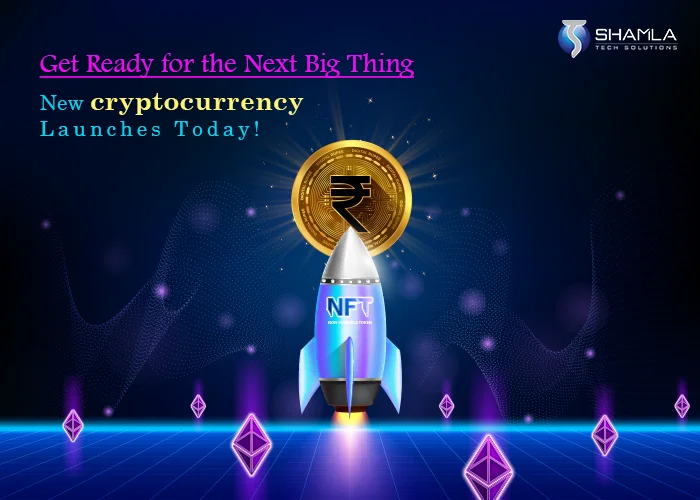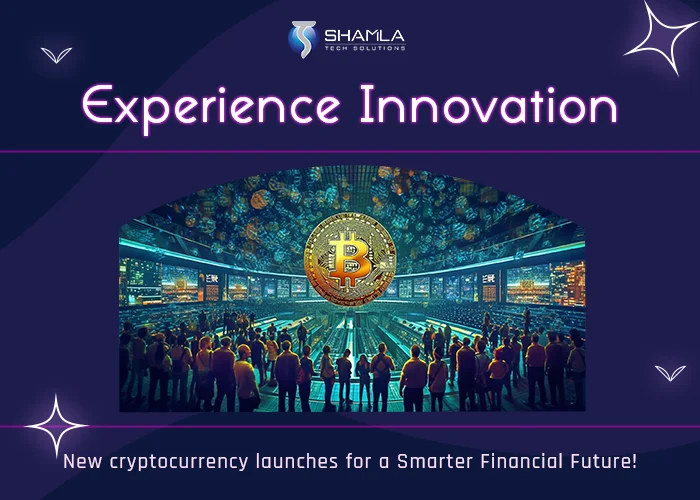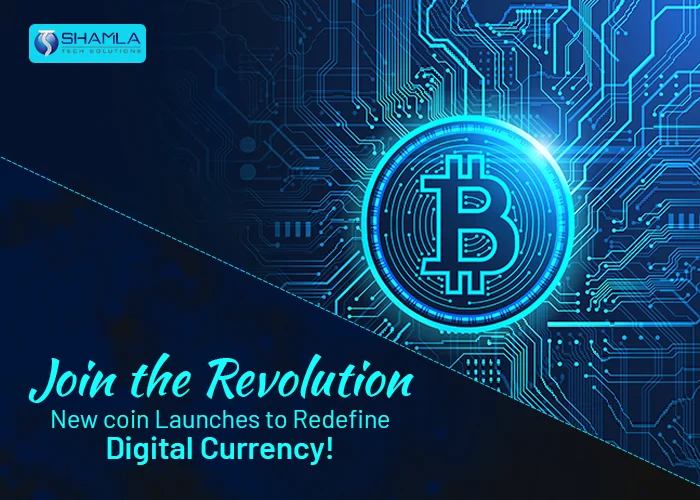Because you can copy the code of an existing blockchain and create your own cryptocurrency instead of starting from scratch, cryptocurrencies can be launched quickly. A blockchain’s code is frequently copied exactly as it is, and modifications can be made to suit the builder’s preferences. Then, a brand-new cryptocurrency emerges that has a unique blockchain but all the same underlying technical characteristics as the original.
Another way that cryptocurrencies could emerge is through a tense “fork.” All a fork is is a modification to the blockchain’s protocol. A community may occasionally disagree on a blockchain’s future course. This argument can occasionally lead to what is called a “fork” if it cannot be settled. At this point, a second blockchain is created by modifying the underlying code.
A well-known instance of this happened with Bitcoin (BTC) in the years between 2015 and 2017. Eventually, discussions about design flaws in Bitcoin’s scalability resulted in a hard fork that produced Bitcoin Cash, a cryptocurrency that is entirely different from Bitcoin.
The most recent example of developing a completely new blockchain is Aptos (APT), a Layer 1 cryptocurrency that was introduced a few weeks ago by former Meta Platforms staff members.
For those who are unfamiliar with cryptocurrencies, Layer 1 suggests that each one has a blockchain that can be utilized as a foundation. Several well-known Layer 1 cryptos are Solana (SOL), Cardano (ADA), and Ethereum.
After much anticipation, Aptos underperformed in its first trading session. The distribution of its tokens, of which almost half are given to investors, major backers, and the Aptos Labs foundation, has drawn criticism. Tokenomics, the study of token distribution, is a key component in evaluating a new cryptocurrency.
New coin launches
The new coin launches in another way. Some blockchains are built to support additional cryptocurrencies.
On top of these already-existing blockchains, developers can thus introduce new coins, with the newly generated money being referred to as a “token.” A token does not have to be a native member of the blockchain in order to function as a digital currency.
Certain tokens require knowledge and time to launch with high levels of customization, whereas others can be accessed online with a few clicks. A few minutes of their time are all that is needed to launch a token on top of another blockchain, not technical expertise. Online services exist that facilitate the quick launch of a new token.
Is the new coin a potential investment opportunity
Buying new currencies soon after new coin launches is a dangerous venture..
A public launch is often the first opportunity for venture capital (VC) firms to offload liquidity and realize a profit on their investment in many cryptocurrencies.
Retail investors have historically been used as exit liquidity due to a combination of factors including the loose regulatory framework surrounding cryptocurrencies and the founding teams’ propensity for anonymity. Retailers are vulnerable to being taken advantage of; after buying new tokens, insiders and venture capitalists can force a sell-off that drives the token price down.
Furthermore, it is an unfortunate fact that some cryptocurrencies are nothing more than scams that are started using the above-described processes in a matter of minutes. The founders intend to profit quickly while remaining anonymous on the blockchain.
Which new coins are launching in 2024?
As 2024 draws near, many token buyers are once again considering new cryptocurrencies. After months of inertia and pessimism, November 2023 saw a surge of optimism in the crypto market. While interest in new coin launch is growing, many analysts are talking about a potential future bull run as a result of the recent surge in the markets.
We conducted an analysis of recent market trends, crypto analyst reports, and other sources to find emerging cryptocurrencies that are worth monitoring as cryptocurrency enthusiasts evaluate their holdings for the coming year and look to add more modern coins to their collections.
- ApeMax (APEMAX): ApeMax makes a name for itself with its innovative tokenomics, distinctive “Boost-to-Earn” model, and robust early presale.
- Ordinals Coin (ORDI): One of the first BRC-20 tokens created on the Bitcoin Ordinal protocol.
- Worldcoin (WLD): Sam Altman co-founded this proof-of-personhood token that was designed to detect artificial intelligence and bots.
- Sui Token (SUI): Utilising its distinct architecture, SUI allows for parallel transaction execution, setting it apart from many other blockchains.
- Celestia (TIA): A new blockchain that combines ZK solutions with rollups.
- Pepe Coin (PEPE): Effectively combines EVM blockchain technology with meme culture.
What is the latest cryptocurrency project?
- Bitcoin ETF Token: Bitcoin ETF Token (BTCETF), one of the most talked-about recent cryptocurrency projects, provides investors with a special opportunity to profit from the possible approval of a spot Bitcoin exchange-traded fund (ETF).
It’s crucial to remember that the Bitcoin ETF has nothing to do with spot ETFs or bitcoin. The project’s apparent goal is to take advantage of the excitement surrounding the potential approval of spot ETFs.
The goal of BTCETF is to raise awareness of this important turning point in the development of cryptocurrency investing. With its combination of utility and speculative components, the token presents a strong choice for investors hoping to cash in on the hype surrounding the introduction of a Bitcoin exchange-traded fund.
The burn mechanism of BTCETF, which is based on SEC approval process milestones, is one of its primary features. Five percent of the entire supply will be burned after each milestone is reached, which will decrease the quantity of BTCETF tokens in circulation and possibly make them more scarce.
Long-term investment is further encouraged by the Bitcoin ETF Token’s decreasing sell tax, which is correlated with ETF milestones and staking rewards. While BTCETF is still in the presale stage, interested investors can purchase tokens even though it is not yet listed on a public market.
- Meme Kombat: Meme Kombat (MK) is one of the more distinctive products available in the meme coin market, which is still characterized by high levels of innovation.
As the first meme cryptocurrency, Meme Kombat claims to have included battle arenas where users could wager on fictitious fights between meme coin characters.
Artificial intelligence (AI) powers every battle, guaranteeing unpredictable and equitable results. The developers of Meme Kombat believe that their special blend of competitive gaming and memes will make their product stand out from the hundreds of other low-utility projects in the market.
Meme Kombat may also benefit from the growing market for decentralised gaming platforms because of its placement within the expanding GameFi universe. A built-in staking protocol is also available in Meme Kombat, which enhances the fighting game and gives players the chance to possibly win more MK.
Meme Kombat’s distinctive value proposition presents an intriguing new way to interact with this segment of the market, as seen by the high trading volumes of popular coins like DOGE and PEPE, which demonstrate the continued surge in popularity of meme coins.
- PAAL AI: The much-talked-about cryptocurrency project PAAL AI (PAAL) uses artificial intelligence (AI) in a novel way.
This platform uses AI-powered tools that are customized for each user to make cryptocurrency trading and research easier. To level the playing field for retail traders, PAAL has an AI assistant that offers individualized insights, analysis, and recommendations.
Additionally, it provides AutoPAAL, an autonomous research tool that continuously searches through a variety of data sources to produce thorough analyses of the cryptocurrency market. In order to gain access to premium features on the platform and take part in governance, PAAL has an ERC-20 token called PAAL. The buyback and burn strategy used by the token is financed by transaction taxes.
Since its debut, PAAL AI has achieved listings on significant exchanges, such as Gate.io, and implemented cutting-edge technologies from Google Cloud. In the end, PAAL has positioned itself as an innovative project that many believe could be set for a successful end to 2023 by using AI to improve the crypto experience.
- Launchpad XYZ (LPX): Another emerging cryptocurrency platform that is presently in its presale stage is Launchpad XYZ (LPX). This one-stop shop streamlines the DeFi, crypto, metaverse, and NFT spaces to make Web3 more approachable for general users.
The native token of Launchpad XYZ, LPX, has seen a surge in demand during the current presale, which has raised more than $2 million so far. A number of advantages on the platform, such as lowered trading fees, cheaper subscriptions, and first access to brand-new cryptocurrency presales, are unlocked by owning LPX.
Staking rewards are also made possible by LPX to encourage long-term holding. The Launchpad XYZ platform includes a number of tools and features, including expert market insights, metaverse integration, AI-powered analytics, and educational resources.
The project has garnered significant appreciation from novice to intermediate investors due to its ability to tackle several significant obstacles to the widespread adoption of cryptocurrencies.
In order to increase accessibility, Launchpad XYZ’s whitepaper describes the developers’ plan to list LPX on several CEXs. Since many of LPX’s early supporters think that this could be a turning point in the token’s history, investors might want to keep an eye on it in November.
- Shrapnel (SHRAP): Finally, one of the most eagerly awaited blockchain games is Shrapnel (SHRAP), which is scheduled to launch in early 2024.
With AAA-caliber sci-fi fighting, NFT integration, and imaginative modding, Shrapnel aims to differentiate itself from its rivals in the market.
Created by seasoned professionals in the gaming industry with experience in well-known franchises, Shrapnel will allow true ownership of digital assets thanks to its built-in SHRAP token.
The in-game economy, which will facilitate the trading of ephemeral items like character skins, will be powered by SHRAP.
In addition, the SHRAP token can be staked for rewards and is required to create unique player IDs.
While the team works to complete the ecosystem’s features before launching it fully, SHRAP offers an intriguing chance to be among the first to play what may turn out to be a popular cryptocurrency first-person shooter (FPS).

What are the risks associated with investing with a new coin launch?
- Price volatility: The market for cryptocurrencies is still relatively new, with many projects still in the stage of rapid price discovery. As a result, there is an extraordinary degree of price volatility that is not typical of other asset classes.
Such dynamic movements are also influenced by a few other factors, one of which is a thriving, international crypto community that operates around the clock. Crypto markets are open around the clock, in contrast to traditional stock markets. People all over the world are always looking for news that can give them an advantage on the internet and social media, and they act on it to create huge hypes that frequently fizzle out as soon as they begin.
The crypto market’s high level of automation is another element causing price volatility. Numerous programs are continuously scanning the network for identifiable patterns. Because many of the algorithms use similar criteria to predict future price movements, when these happen, they can have a cascading effect.
- Custody of keys: You can sign and send transactions from your wallet balance by using your private keys, which serve as an integrated verification mechanism in your cryptocurrency wallet. Certain wallet providers only give users the ability to create and manage new wallets, leaving them in complete control of their keys.
Users will have access to the private keys managed by other wallet providers, who will grant access via a secure login portal. It can be difficult to choose the best wallet because there are trade-offs between custodial and non-custodial wallets regarding security and recoverability.
Private keys are very important to keep safe because they allow anyone to sign transactions with that wallet as if they were the owner. In the event that you misplace your wallet, software cryptocurrency wallet providers usually advise you to keep a backup copy of your keys somewhere safe. Probably goes without saying, but you should never give out your private keys to third parties or make them publicly visible.
Today’s cryptocurrency owners favor hardware wallets, such as those from Ledger and Trezor, which let users store their private keys on a device that is less vulnerable to hackers and stays offline.
Remember that maintaining the security of your private keys is entirely your responsibility. A secure wallet and a suitable backup strategy should be selected, and private key backups should not be kept on a device that is connected to the internet. Numerous wallet providers advise keeping backups on paper or on a secure USB flash drive.
- Technical complexity: An address to receive cryptocurrencies must be entered when sending them. These take the shape of a lengthy string composed of both letters and numbers.
Even seasoned users occasionally make mistakes when typing or even copying and pasting a receiving address. Sending money to the incorrect address cannot be reversed because blockchain transactions are irreversible.
It’s a simple habit to double or even triple-check the address before sending each transfer; it can save you a lot of hassle later on. Splitting large amounts of money into multiple transactions can also be beneficial when sending them; the higher fees are offset by increased security, and this way, even if one transaction fails, not all of the money will be lost.
- Centralization and governance risk: Although cryptocurrencies and blockchains are frequently decentralized, the companies that issue them might not be. This implies that for certain cryptocurrency projects, we still have to rely on a reliable party to behave in the project’s best interests. This is the case with well-known projects like Tether (USDT) and Binance Coin (BNB), where a core business entity retains governance rights and project control and does not grant token holders any say.
Developers are usually incentivized to maximize the success of their projects. But occasionally, these goals might change, or nefarious team members might choose to take advantage of the network internally.
There are many opportunities for mismanagement because cryptocurrency projects frequently depend on contributions from numerous teams, including marketing, community support, development, and research and development. For instance, a project might miss its delivery deadlines, development milestones, or community expectations overall, which would be detrimental to the product’s value.
Are there any upcoming Initial Coin Offerings (ICOs)?
Encore Defi
- Meme Kombat: Meme Kombat (MK) is one of the more distinctive products available in the meme coin market, which is still characterized by high levels of innovation.
As the first meme cryptocurrency, Meme Kombat claims to have included battle arenas where users could wager on fictitious fights between meme coin characters.
Artificial intelligence (AI) powers every battle, guaranteeing unpredictable and equitable results. The developers of Meme Kombat believe that their special blend of competitive gaming and memes will make their product stand out from the hundreds of other low-utility projects in the market.
Meme Kombat may also benefit from the growing market for decentralised gaming platforms because of its placement within the expanding GameFi universe. A built-in staking protocol is also available in Meme Kombat, which enhances the fighting game and gives players the chance to possibly win more MK.
Meme Kombat’s distinctive value proposition presents an intriguing new way to interact with this segment of the market, as seen by the high trading volumes of popular coins like DOGE and PEPE, which demonstrate the continued surge in popularity of meme coins.

Can I mine the new coin at launch?
No, you cannot mine a new coin while there is a new coin launch taking place. However, you can become the part of the early sales of the project by:
- Discovering fresh blockchain tokens.
- Taking part in cryptocurrency pre-sales.
- Taking part in launch pools and launchpads.
- Looking for airdrops in crypto

What exchanges will list the new coin?
What technology or blockchain does the new coin use?
There are various new coin launches taking pace and all of them can use four different technology or blockchain, including;
- Public blockchain: Public blockchain technology is the first kind of blockchain technology. This is the source of cryptocurrencies such as Bitcoin, which contributed to the adoption of distributed ledger technology (DLT). It eliminates the drawbacks of centralization, such as decreased transparency and security.
DLT distributes data throughout a peer-to-peer network rather than storing it in a single location. Because it is decentralized, there has to be a way to confirm the legitimacy of the data. Through the use of a consensus mechanism, users of the blockchain may agree on the ledger’s present state. Two popular consensus techniques are proof of stake (PoS) and proof of work (PoW).
- Private blockchain: A private blockchain is one that is managed by one organization or operates in a controlled setting, such as a closed network. Although this sort of blockchain works on a much smaller scale, it functions similarly to a public blockchain network in that it makes use of peer-to-peer connectivity and decentralization. Private blockchains are usually run on a limited network within a corporation or organization, rather than being open to everybody who wants to join and contribute processing power. They go by the names business blockchains or permissioned blockchains as well.
- Hybrid blockchain: Organizations who wish to benefit from the best of both worlds occasionally employ hybrid blockchain, a kind of blockchain technology that blends aspects of public and private blockchain. It enables businesses to build up a public permissionless system in addition to a private permission-based system, giving them the ability to manage which data is made publicly available and who may access certain data stored on the blockchain.
- Consortium blockchain: The characteristics of a hybrid blockchain are shared by the fourth form of blockchain, consortium blockchain, commonly referred to as a federated blockchain. However, it differs in that it is a decentralized network where several members of the organization work together. A consortium blockchain essentially eliminates the hazards associated with a single organization running the network on a private blockchain by restricting access to a certain group.



